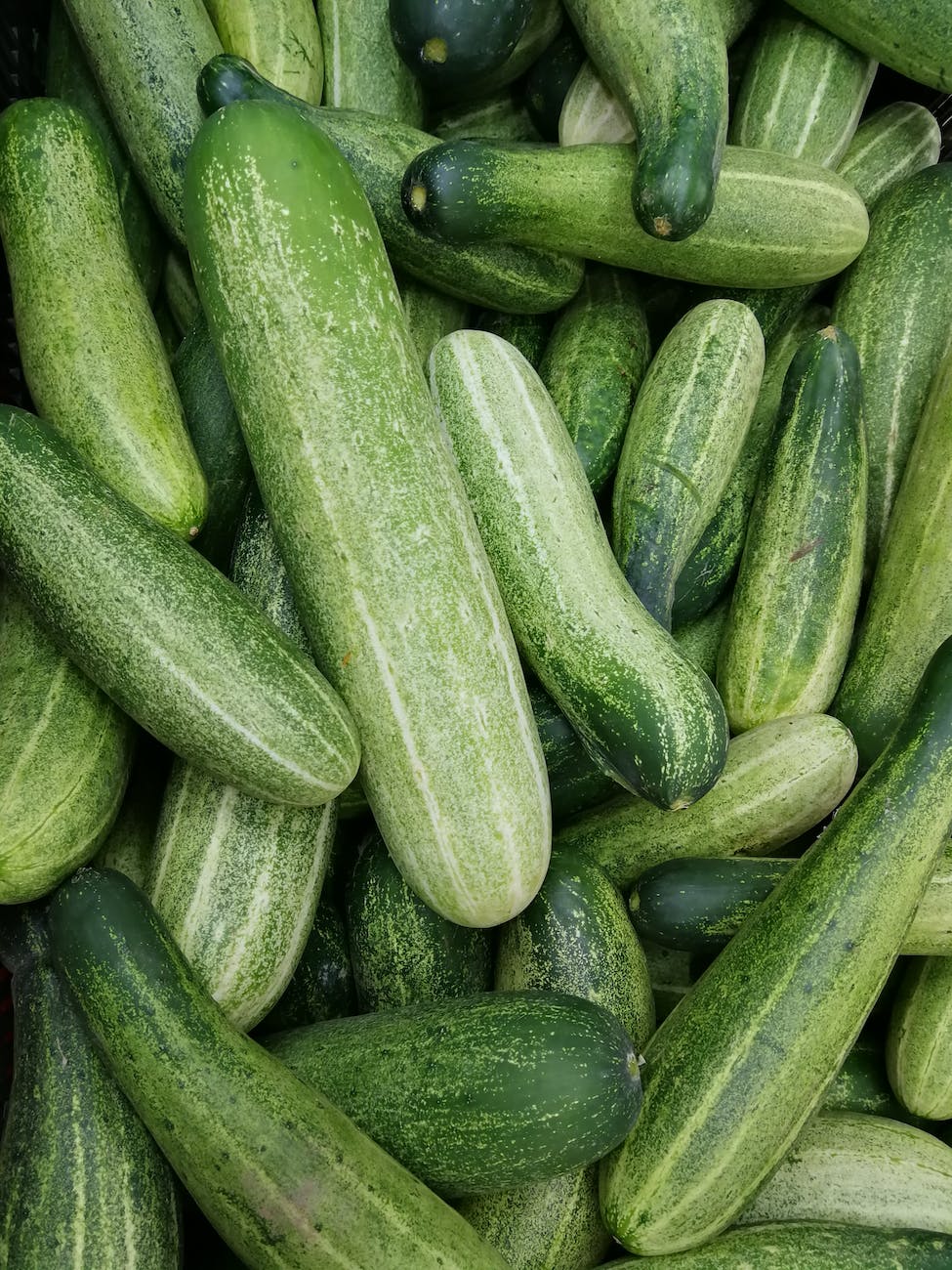
Following a ketogenic, or keto, diet means you’re focused on consuming foods high in healthy fats and low in carbohydrates. This dietary switch allows your body to enter a metabolic state called ketosis, where it burns fat for energy. However, this dietary shift can sometimes lead to an imbalance of electrolytes in the body, leading to what is commonly known as the “keto flu”. Stay on top of your game with these five homemade electrolyte drink recipes designed specifically for people following a keto diet.
Why Are Electrolytes Important?
Electrolytes, such as sodium, potassium, and magnesium, are essential for maintaining fluid balance, nerve function, and muscle contractions in the body. When you’re on a keto diet, your body tends to lose electrolytes more rapidly due to increased water loss, making it even more essential to replenish them regularly.
1. Zesty Lemon Keto Electrolyte Drink
A low-carb drink that’s refreshing and packed with essential electrolytes. The tangy flavor of lemon is balanced with the sweetness of a keto-approved sweetener.
Recipe Ingredients:
- Juice of 1 lemon
- 2 cups of water
- A pinch of sea salt
- 1/4 teaspoon of a keto-friendly sweetener like Erythritol
What’s Good in It:
- Lemon: Provides vitamin C and adds a refreshing flavor to the drink.
- Sea Salt: An excellent source of sodium, an essential electrolyte often lost on a keto diet.
- Erythritol: A natural, keto-friendly sweetener that does not affect blood sugar levels.
Directions:
- Squeeze the juice of one lemon into a glass.
- Add the water, sea salt, and erythritol.
- Stir well until the sweetener is fully dissolved and enjoy your low-carb electrolyte drink.
2. Keto-friendly Coconut Water Refresher
A simple yet potent electrolyte drink harnessing the natural electrolyte balance found in coconut water.
Recipe Ingredients:
- 2 cups of unsweetened coconut water
- Juice of 1 lime
- A pinch of sea salt
What’s Good in It:
- Coconut Water: A natural source of electrolytes, especially potassium.
- Lime: Provides vitamin C and adds a refreshing flavor to the drink.
- Sea Salt: An excellent source of sodium.
Directions:
- Pour the coconut water into a glass.
- Squeeze in the juice of one lime and add a pinch of sea salt.
- Stir well and enjoy this tropical keto-friendly electrolyte drink.
3. Keto Avocado Smoothie
A creamy and filling smoothie packed with healthy fats and fiber. Perfect as a pre-workout snack or a quick breakfast on the go.
Recipe Ingredients:
- 1 ripe avocado
- 2 cups of unsweetened almond milk
- A pinch of sea salt
- 1/4 teaspoon of a keto-friendly sweetener like Stevia
What’s Good in It:
- Avocado: A powerhouse of healthy fats, fiber, and essential nutrients, including potassium.
- Almond Milk: A low-carb milk alternative that’s high in calcium.
- Sea Salt: An excellent source of sodium.
- Stevia: A natural, keto-friendly sweetener that does not affect blood sugar levels.
Directions:
- Slice the avocado and add it to a blender along with the almond milk, sea salt, and stevia.
- Blend until smooth and creamy.
- Pour into a glass and enjoy this satisfying keto smoothie.
4. Berry Delicious Keto Electrolyte Drink
A fruity and refreshing drink that’s loaded with antioxidants and essential electrolytes.
Recipe Ingredients:
- 1 cup of mixed berries (strawberries, blueberries, raspberries)
- 2 cups of water
- A pinch of sea salt
- 1/4 teaspoon of a keto-friendly sweetener like Erythritol
What’s Good in It:
- Berries: Low in carbs but high in fiber and antioxidants.
- Sea Salt: An excellent source of sodium, an essential electrolyte often lost on a keto diet.
- Erythritol: A natural, keto-friendly sweetener that does not affect blood sugar levels.
Directions:
- Add the mixed berries into a blender along with the water, sea salt, and erythritol.
- Blend until smooth.
- Pour into a glass and enjoy this antioxidant-rich keto electrolyte drink.
5. Cucumber Mint Keto Cooler
A hydrating and cooling electrolyte drink that’s perfect for hot summer days or post-workout hydration.
Recipe Ingredients:
- 1 cucumber
- A handful of fresh mint leaves
- 2 cups of water
- A pinch of sea salt
- 1/4 teaspoon of a keto-friendly sweetener like Stevia
What’s Good in It:
- Cucumber: High in water content and a good source of several essential minerals.
- Mint: Known for its cooling properties and aids in digestion.
- Sea Salt: An excellent source of sodium.
- Stevia: A natural, keto-friendly sweetener that does not affect blood sugar levels.
Directions:
- Slice the cucumber and add it to a blender along with the mint leaves, water, sea salt, and stevia.
- Blend until smooth.
- Pour into a glass and enjoy this refreshing keto cooler.
Journey of Wellness Continues
We appreciate your interest in our Keto-friendly homemade electrolyte drink recipes. Your quest for a healthier living doesn’t stop here, we’ve curated more resources tailored to your needs:
- Delve into our Post-Workout Electrolyte Drink Recipes. These replenishing drinks will aid in your recovery after strenuous physical activity.
- For individuals dealing with diabetes, it’s crucial to maintain a balanced diet. Our Diabetic-friendly Electrolyte Drink Recipes take into consideration your specific nutritional requirements.
- Whether it’s a religious observance or a health-conscious choice, fasting can be a transformative experience. Aid your journey with our Fasting-friendly Electrolyte Drink Recipes.
- Dehydration is a common issue, especially during the summer months. Stay hydrated with our DIY Natural Electrolyte Drinks for Dehydration.
- Lastly, don’t forget to return to the source, our master guide on Natural Homemade Electrolyte Drink DIY Recipes, which inspired this whole series.
Frequently Asked Questions
1. What are the benefits of homemade electrolyte drinks for a keto diet? Homemade electrolyte drinks can help replenish electrolytes lost due to the diuretic effect of the ketogenic diet. They can prevent symptoms like fatigue, headaches, and muscle cramps, commonly known as the “keto flu”.
2. Can these keto electrolyte drinks help with weight loss? Yes, these drinks can support your weight loss efforts on a ketogenic diet. They help maintain hydration and provide essential minerals, keeping your energy levels up so you can stick to your exercise and diet regimen.
3. Why do we need to add sea salt to these homemade keto electrolyte drinks? Sea salt is rich in sodium, a critical electrolyte that the body needs for maintaining fluid balance, nerve function, and muscle contractions. When on a keto diet, the body tends to lose sodium, making it crucial to add to your drinks.
4. Can I use any other sweeteners in these drinks? Yes, any keto-friendly sweeteners like Erythritol, Stevia, or Monk Fruit can be used as per your preference. However, remember to adjust the quantity as per the sweetness level of the sweetener.
5. Why is coconut water used in some of these recipes? Coconut water is a natural source of several electrolytes, especially potassium, making it an excellent addition to a homemade electrolyte drink. However, ensure to use unsweetened coconut water to maintain the low-carb nature of the ketogenic diet.
6. Can I replace the water with another liquid in these recipes? Yes, as long as you ensure the substitute is low-carb and keto-friendly. For example, unsweetened almond milk or other nut milks can be a good alternative.
7. What other fruits and vegetables can I add to these drinks? Low-carb fruits and vegetables such as spinach, kale, zucchini, and strawberries can be great additions. However, always ensure to maintain the overall carb count of the drink within your daily limits.
8. Are these homemade electrolyte drinks a meal replacement? No, these drinks are not designed to be meal replacements. They are meant to help supplement your electrolyte intake while on a ketogenic diet.
9. How often should I consume these homemade keto electrolyte drinks? This depends on your individual needs, activity levels, and how you feel. It’s advisable to listen to your body and adjust your intake accordingly. Some people may benefit from a drink a day, while others may need more.
10. Can these keto electrolyte drinks help prevent muscle cramps? Yes, maintaining a proper balance of electrolytes, especially sodium, potassium, and magnesium, can help prevent muscle cramps, which are common when starting a keto diet.
11. Can I consume these drinks if I’m not on a ketogenic diet? Yes, these drinks are beneficial for everyone, not just those on a ketogenic diet. They can help maintain hydration and replenish electrolytes lost during workouts or hot weather. However, if you’re not following a low-carb diet, you may adjust the recipes, like using regular sweeteners instead of keto-friendly ones.
12. Is it safe for kids and pregnant women to consume these homemade keto electrolyte drinks? These drinks are generally safe, but it’s always best to consult with a healthcare provider. For kids, you might want to adjust the sweetness and replace sea salt with a pinch of regular salt for a milder taste.
13. Can these keto electrolyte drinks help with keto flu symptoms? Yes, they can help alleviate keto flu symptoms like headaches, fatigue, and dizziness by replenishing lost electrolytes and maintaining hydration.
14. What’s the best time to consume these homemade keto electrolyte drinks? These drinks can be consumed at any time of the day. However, they can be particularly beneficial when consumed pre or post-workout to replenish lost electrolytes or first thing in the morning to kick start hydration.
15. Can I store these homemade electrolyte drinks? Yes, you can store these drinks in the fridge for up to 24 hours. However, it’s always best to consume them fresh to ensure maximum nutrient availability.
16. Can I add protein powder to these drinks? Yes, adding a scoop of low-carb protein powder can turn these drinks into a protein-rich post-workout recovery aid. Make sure to choose a keto-friendly protein powder.
17. Can I consume these drinks during a fast? Yes, you can consume these drinks during a fasting period as long as they do not exceed your allowed caloric intake during the fasting window. It’s best to check with your fasting guidelines or consult with a health professional.
18. Why do some of these recipes use almond milk? Unsweetened almond milk is a great low-carb, dairy-free alternative that is suitable for a ketogenic diet. It also provides additional creaminess to drinks.
19. Can I add ice to these drinks? Yes, you can add ice to these drinks to make them more refreshing, especially during the hot summer months.
20. Why are berries used in some of these keto electrolyte drinks? Berries like strawberries, blueberries, and raspberries are low in carbs but high in fiber and antioxidants, making them a great addition to a keto electrolyte drink.
Conclusion
Maintaining a proper electrolyte balance is crucial when following a keto diet. With these five homemade keto-friendly electrolyte drinks, you can stay hydrated and energetic, all while enjoying delicious flavors.
Blog Tags: Keto diet, homemade electrolyte drink, DIY electrolyte drink, keto hydration, health and wellness, low-carb recipes













